Year 3
The English curriculum is built around the three interrelated strands of language, literature and literacy. Teaching and learning programs should balance and integrate all three strands. Together, the strands focus on developing students' knowledge, understanding and skills in listening, reading, viewing, speaking, writing and creating. Learning in English builds on concepts, skills and processes developed in earlier years, and teachers will revisit and strengthen these as needed.
In Years 3 and 4, students experience learning in familiar contexts and a range of contexts that relate to study in other areas of the curriculum. They interact with peers and teachers from other classes and schools in a range of face-to-face and online/virtual environments.
Students engage with a variety of texts for enjoyment. They listen to, read, view and interpret spoken, written and multimodal texts in which the primary purpose is aesthetic, as well as texts designed to inform and persuade. These encompass traditional oral texts including Aboriginal stories, picture books, various types of print and digital texts, simple chapter books, rhyming verse, poetry, non-fiction, film, multimodal texts, dramatic performances and texts used by students as models for constructing their own work.
The range of literary texts for Foundation to Year 10 comprises Australian literature, including the oral narrative traditions of Aboriginal and Torres Strait Islander Peoples, as well as the contemporary literature of these two cultural groups, and classic and contemporary world literature, including texts from and about Asia.
Literary texts that support and extend students in Years 3 and 4 as independent readers describe complex sequences of events that extend over several pages and involve unusual happenings within a framework of familiar experiences. Informative texts include content of increasing complexity and technicality about topics of interest and topics being studied in other areas of the curriculum. These texts use complex language features, including varied sentence structures, some unfamiliar vocabulary, a significant number of high-frequency sight words and words that need to be decoded phonically, and a variety of punctuation conventions, as well as illustrations and diagrams that support and extend the printed text.
Students create a range of imaginative, informative and persuasive types of texts including narratives, procedures, performances, reports, reviews, poetry and expositions.
(source: www.australiancurriculum.edu.au)
Achievement Standard
Receptive modes (listening, reading and viewing)
By the end of Year 3, students understand how content can be organised using different text structures depending on the purpose of the text. They understand how language features, images and vocabulary choices are used for different effects.
They read texts that contain varied sentence structures, a range of punctuation conventions, and images that provide extra information. They use phonics and word knowledge to fluently read more complex words. They identify literal and implied meaning connecting ideas in different parts of a text. They select information, ideas and events in texts that relate to their own lives and to other texts. They listen to others' views and respond appropriately using interaction skills.
Productive modes (speaking, writing and creating)
Students understand how language features are used to link and sequence ideas. They understand how language can be used to express feelings and opinions on topics. Their texts include writing and images to express and develop, in some detail, experiences, events, information, ideas and characters.
Students create a range of texts for familiar and unfamiliar audiences. They contribute actively to class and group discussions, asking questions, providing useful feedback and making presentations. They demonstrate understanding of grammar and choose vocabulary and punctuation appropriate to the purpose and context of their writing. They use knowledge of letter-sound relationships including consonant and vowel clusters and high-frequency words to spell words accurately. They re-read and edit their writing, checking their work for appropriate vocabulary, structure and meaning. They write using joined letters that are accurately formed and consistent in size.
(source: www.australiancurriculum.edu.au)
- Plus Plan

Fact File and Report Writing Scaffold Pack
Teach your students to write informative texts using this selection of animal, object and occupation fact files.
- Plus Plan

Contractions Worksheet Pack
Help students learn more about contractions with this contraction worksheet pack.
- Free Plan

Bumblebee Contraction Worksheets
Practise creating contractions from two words using this set of cute bumblebee worksheets.
- Plus Plan

Persuasive Text Type Poster With Annotations
Display this Persuasive text with annotations to help students identify the structure of this type of text.
- Plus Plan
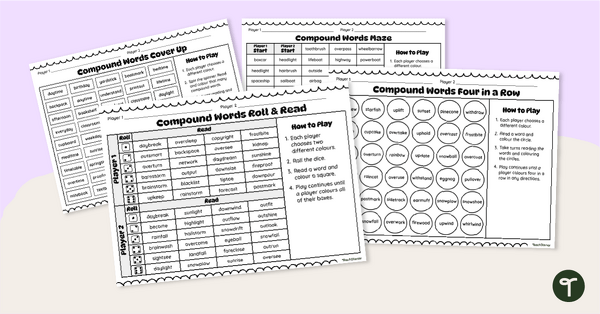
Compound Word Games for Partners
Boost vocabulary skills and help your students learn to read and write compound words with engaging Compound Word Partner Games!
- Plus Plan
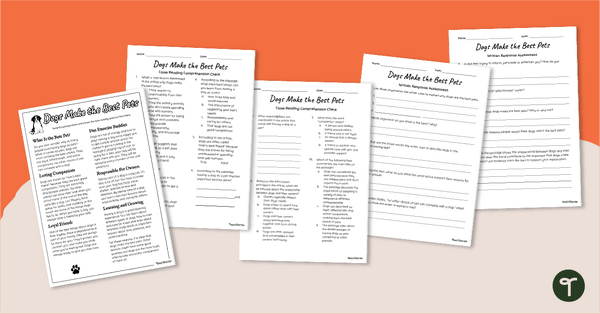
Dogs Make The Best Pets - Reading Comprehension Test
Assess reading comprehension skills with printable Reading and Writing Comprehension worksheets.
- Plus Plan

Rainforest Bird Craft & Writing Template
Pair a fun bird craft and informational writing to create a fun jungle-themed classroom display.
- Plus Plan

Persuasive Devices Interactive Activity
Explore persuasive device examples with your students using this digital game perfect for your persuasive writing lessons.
- Plus Plan

Adding Adverbs to Sentences Teaching Presentation
Enjoy this fun drama game with your students as you teach them that adverbs describe how, when or where a verb is happening!
- Plus Plan

Persuasive Devices Sorting Activity
Explore persuasive devices with your students using this set of sorting cards.
- Plus Plan

Homophones Tarsia Puzzle
Challenge your students to identify and match pairs of homophones with this differentiated Tarsia puzzle, perfect for your primary school vocabulary lessons.
- Plus Plan

Find The Imposter! Interactive Suffix Game
Practice using the suffixes -s and -es to pluralize words with an exciting FInd the Imposter Interactive activity.
- Plus Plan

-Less Suffixes Worksheet
Build vocabulary skills with a suffix worksheet featuring the suffix -less.
- Plus Plan
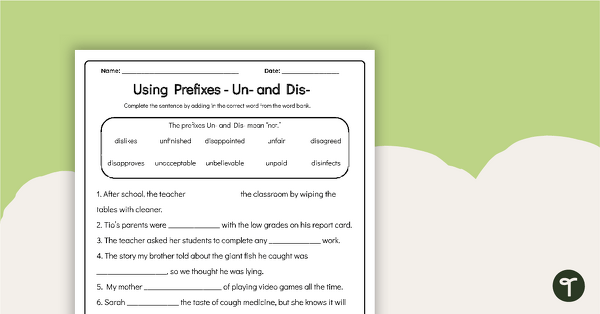
Un- and Dis- Prefixes Worksheet
Build vocabulary skills with a prefix worksheet featuring the prefixes Un- and Dis-.
- Plus Plan

Common Spelling Rules PowerPoint
Boost your students' spelling skills with an instructional slide deck teaching the different spelling rules.
- Free Plan

Prefix Puzzles - Match Up Cards
Practise building, reading, and understanding the meaning of words with prefixes with a fun set of prefix puzzles.
- Plus Plan

Dad Snores! - Decodable Reader (Level 7)
Develop confident, successful readers with this phonics-based, printable decodable book.
- Free Plan

Renewable vs Non-Renewable Energy Sources – Worksheet
Discover the difference between renewable and non-renewable energy sources with a comprehension passage and worksheet.
- Free Plan
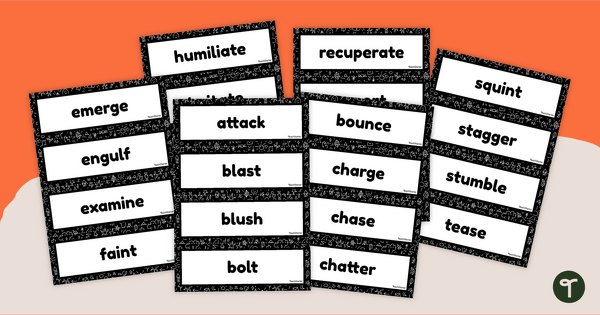
Strong Verbs Word Wall
Print a set of strong verbs word wall cards to help your students boost their writing skills!
- Plus Plan

Limericks for Kids - Poem Template
A 3-page limerick template and instructions for students to use when learning how to write a limerick.
- Plus Plan
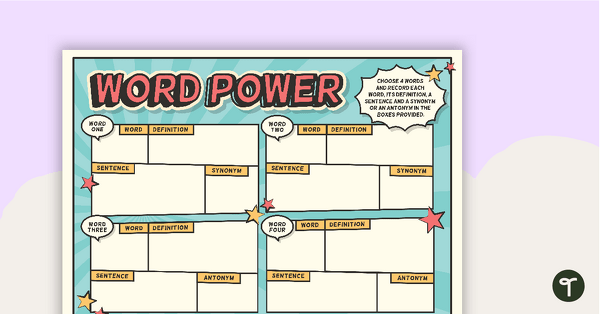
Word Power Vocabulary Worksheet
A comic book themed worksheet to use in the classroom when building vocabulary.
- Plus Plan

Imagine Conjunctions Worksheet
Spark students' creativity with this conjunctions worksheet containing four images to prompt students to write compound sentences.
- Plus Plan

Welcome to Australia! – Worksheet
A comprehension worksheet for a country profile from the Year 3 magazine (Issue 2).
- Plus Plan

10 Fascinating Facts About Beaches – Comprehension Worksheet
A comprehension worksheet for a magazine article about beaches.
- Plus Plan

Their, There, They're Poster
Teach students to differentiate between their, there and they're with this classroom poster.
- Plus Plan

Narrative Plot Structure Diagram
A plot diagram for students to refer to when planning their narrative writing.
- Plus Plan

Words with Prefixes Worksheet - Prefix Re-
Build students' understanding of the prefix re-.with a printable prefix worksheet.
- Plus Plan

Sequencing Activity - Stop Polluting The Ocean (Persuasive Text) - Simplified Version
A sequencing task using a simple persuasive text.
- Free Plan

Identifying Procedural Language Worksheets
Help your students identify procedural language with this set of three worksheets.
- Plus Plan

Readers' Theatre Script - Rhyme Time
A script which can be used during readers' theatre or Drama sessions, aimed at students 8 years and over.
- Plus Plan

Write a Haiku Poem Worksheet
Set your students up for success when writing a haiku with this set of scaffolded, easy-to-follow worksheets.
- Plus Plan

Write a Cinquain Poem Worksheet
Set your students up for success when writing a cinquain poem with this set of scaffolded, easy-to-follow worksheets.